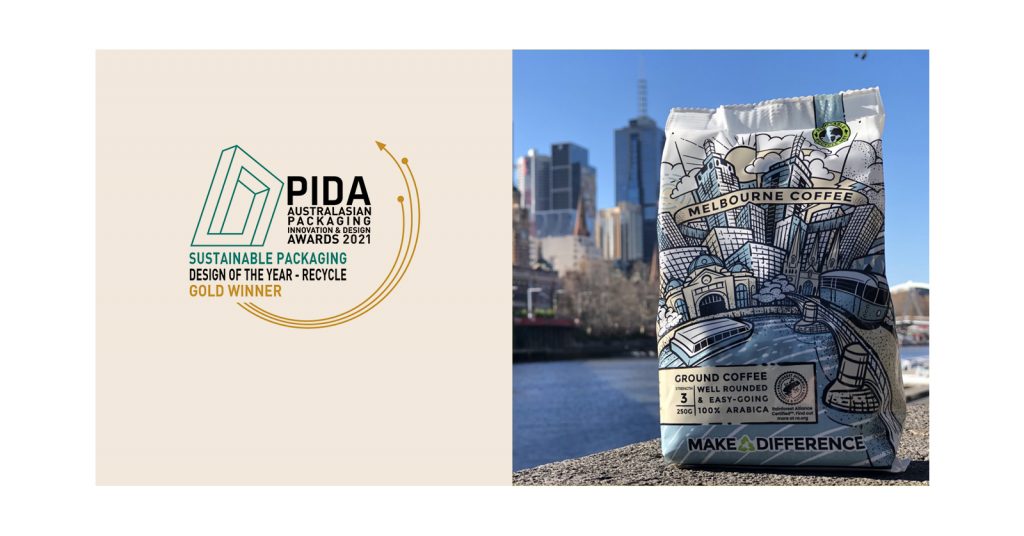
One of the reasons our team has based itself and our development of BOPE products in Melbourne is for the coffee. Because we work all hours and have clients around the world it’s true for us that sleep is a weak substitute for coffee. So we made our own!
Setting a high bar, it’s not just about technical packaging it’s about changing a mindset that does not just apply to coffee. Coffee is expensive and demands packaging that captures and keeps the roasted freshness inside so the consumer can enjoy the product as the roaster intended.
The vast majority of packaging used in the sector is a combination of different polymer substrates, PP, PE, PET, METPET, ALU, (mixed laminates) typically combined in layers of 3 depending on the packaging type and client preference. Some roasters are using compostable laminates that provide a barrier, popular in north European countries but this equates to a very small percentage of what’s on the market, mainly because of the high cost and availability of accredited suppliers.
We set out to create a 100% recyclable bag from a single source polymer group with a technical barrier to oxygen and moisture for our coffee brand, with the knowledge this will contribute to the ease of recycling and is fully aligned with the European strategy for soft plastics recycling. We designed this product for a circular economy, to optimise end-of-life potential, signpost the same and perform its technical duty as a packaging material.
The idea for the bag started in 2017, working with some of the leading coffee roasters and retailers in the UK, the need to transition to sustainable packaging was always surpassed by the need to deliver ever-increasing volumes, efforts were focused on capsules, not films and bags. Arriving in Melbourne I had time to do this work!
Clear film unprinted trials in 2 separate combinations.
We laminated BOPE with multi-layer complex co-extrusion, reverse printed eye mark only to enable the bags to be packed at the coffee roasters.
We began with:
A couple of weeks passed, after some head-scratching and some lab testing we increase the micron of the co-extruded PE by 10 microns, most critically we reduce the temperature sealing window on the sealing layer so the valve will seal more quickly at a lower temperature and avoid the cutting of the material.
We laminate to our new multi-layer co-extruded PE structure 85mu to the 25mu BOPE, only producing one sample this time to save cost and time.
We wait for our slot with the roaster, COVID restrictions hampering time to test materials as priority is given to production understandably, it works, two short cycles to set the bag up, fill the bags, all is well, now we introduce the valve, 85% success straight away over a prolonged run, some tweaks to timing and we have a commercial running speed and 99% success on valve application — we have a product that works!
While the material works, we have to evidence the technical performance. We send samples to the lab for testing, what we are looking for:
While conducting the testing we were completing the design for Melbourne Coffee. We wanted to use a limited colour pallet and keep the print coverage to a minimum to support ‘end of life’ recycling but without compromise to design aesthetic and appeal. Keeping ink coverage low and using a white substrate to support artwork reduces inputs and supports ease of recycling and material composition.
Critical ‘on packaging’ calls to action, directly asking the consumer to ‘recycle me’ and ‘make a difference’ combined with clear signposting of appropriate recycling streams in both Australia and Europe provided through ARL, OPRL and Red Cycle. Consumers need guidance about recycling or disposal, clear labelling schemes support this process.

We are working with BOPE in many ways, replacing BOPA to provide puncture resistance and support ease of recycling for ‘bag in the box’ type applications, often used for oils, cream cheeses, sodas, chemicals. We are using as a sandwich layer (abuse layer) to reduce packaging weight in laminates, 40m outperforming 90mu blown PE. Most recently we have digitally printed a specifically developed BOPE for an exciting new project we will be talking to you about soon, working with multi-layer co-extruded technical substrates we hope to have developed a new award-winning mono-structure packaging solution.
Melbourne is not the only town that runs on coffee, there are lots of opportunities to keep our coffee bags out of the landfill, pet food packaging is the next obvious target on my list –watch this space.
If you are developing a plan for your product ranges make packaging add value to your offer, communicate some of your companies values through ‘waste’ we’d love to help.
Sing out,
Edward